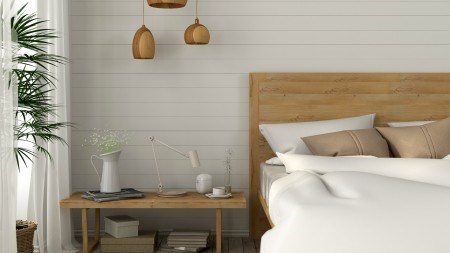Home staging is not a new trend, but it is certainly one that is growing in popularity and according to Adrian Goslett, CEO of RE/MAX of Southern Africa, it can have an enormously positive impact on the sale of any home.
Home staging is a great marketing tool for estate agents. Essentially, it is the act of preparing a private residence for sale. Its goal is to make a home more appealing to the highest number of potential buyers, in order to sell it more swiftly and for a higher price.
Staging techniques focus on improving a property's appeal by transforming it into a welcoming and attractive space that people can see themselves living in. “For example, how many times have you stopped to admire a particular display in a shop window? In essence, that is staging at its finest – the neatly and well put together manikins used for clothing store displays for example, are designed to provide you with visual reassurance that the selected items of clothing worn by the manikins would look good on you too. Home staging is merely showing off your home’s best features and creating aspirations in potential buyers,” explains Goslett.
Staging is a specialised skill – the cost of which would include the staging consultant’s fee, paint, wallpaper, the rental of “props” such as furniture or artwork, as well as all the miscellaneous products required to fix any obvious issues with the home in question, such as filling cracks, sanding down floors, rubble removal, and so on. However, Goslett explains that even if you cannot afford the skills of a professional stager, a few of the simplest things can make a really big difference to the outcome of a sale. In fact, home staging has become so popular and successful that many television series have been produced to assist homeowners and sellers tackle the task of making the most of their home, specifically for a show day or just for personal appreciation.
Sellers need to go the extra mile to make their house as appealing as possible, especially if the market is slow. It needs to be clean, inviting and exciting for the potential buyers to view. Not only do they need to want your home, but they need to want it more than any other homes for sale in your area.
The first step, says Goslett, is to give your house and garden a good clean: “Removing any clutter is a really good place to start – you want any potential buyer to focus on your home, not your stuff. Remember, your home will need to be about half as full as it was before you started, so be ruthless in your selection. If there are pieces that you don’t want to get rid of, but are not suitable for the show day, then hire a storage facility and store your extra items there while your home is on the market.” Once all the clutter has been removed you can start cleaning.
Says Goslett: “If your home has old carpets, getting them professionally cleaned can make all the difference. Thoroughly dust, polish and clean your home from the windows, to the floors, walls and even ceilings. A clean home is a happy one. Remember to take down any curtains and give them a good wash. If they are old and damaged; then think of investing in some new ones.
Similarly, be sure to put fresh, or new, bedding on your beds on the show day. “Also, consider how each room sells – try and light candles or place air fresheners in rooms or hallways to make your home more inviting as aroma is a very important consideration. For example, there is nothing better than the smell of freshly brewed coffee or freshly baked bread on a show day – it is a really inviting smell to most people, conjuring up all sorts of positive emotions,” he explains. Once your house has been de-cluttered, cleaned and it smells good, you can look at possibly painting the walls, and rearranging the furniture. Goslett says that for best results, each room should be made to look as open and bright as possible: “Small, cluttered and dark spaces are not attractive to anybody. In an open and airy room however, potential buyers are given the opportunity to imagine what their furniture would look like in that space. As such, make sure the curtains are always open, that the lights are on, and if the room is overcrowded, be sure to remove some furniture to open the space up a little.
“Lastly, it is the small things that make all the difference – mow the lawn, plant some seedlings, make sure the pool is blue and that the patio is neat, clean and organised. Replace any damaged door handles or knobs, buy some fresh flowers to display on the show day, place fresh fruit in a bowl in the kitchen, add a new welcome mat by the front door, make sure the bathrooms are well stocked with hand soap and toilet paper – all these little things combined will impress the buyer,” concludes Goslett.


